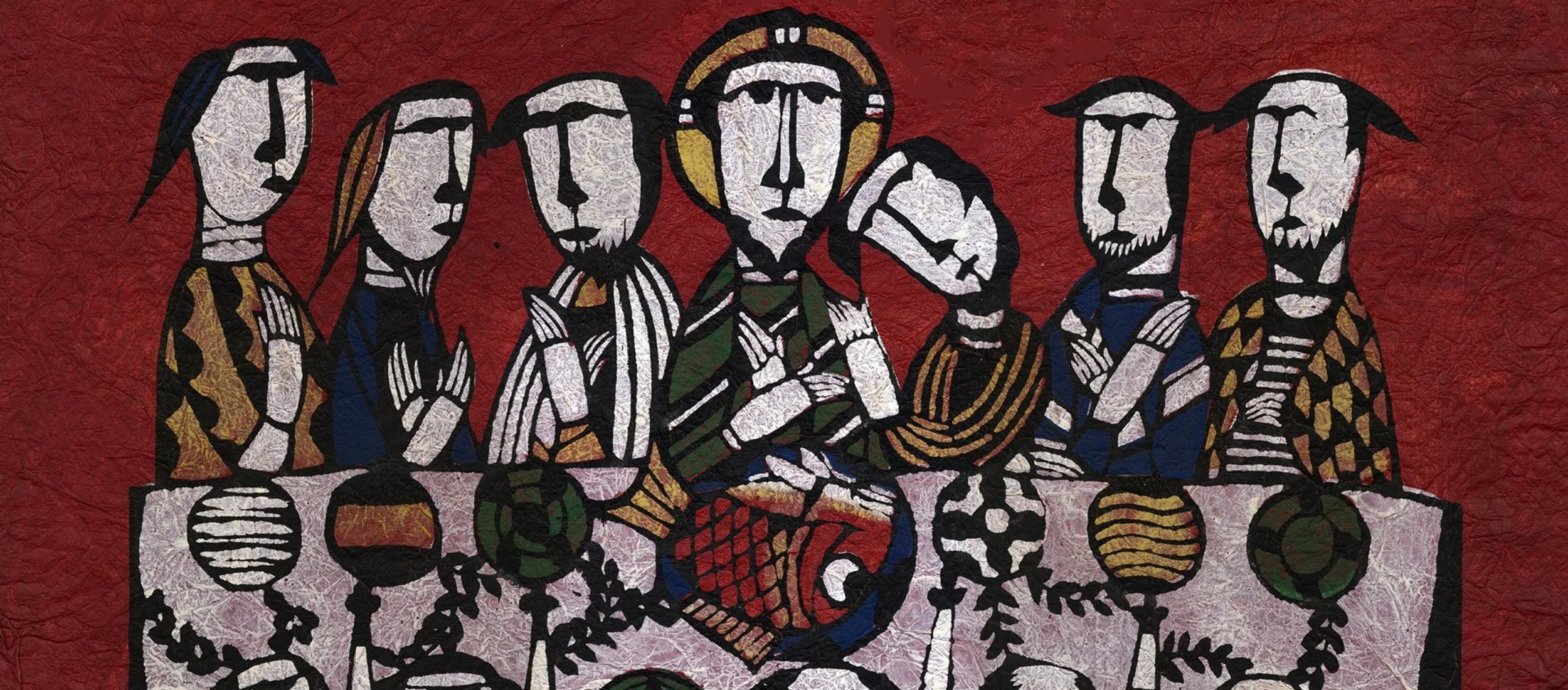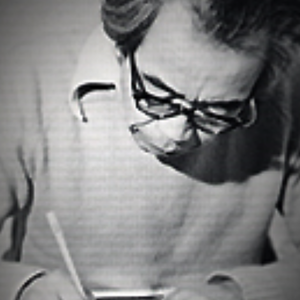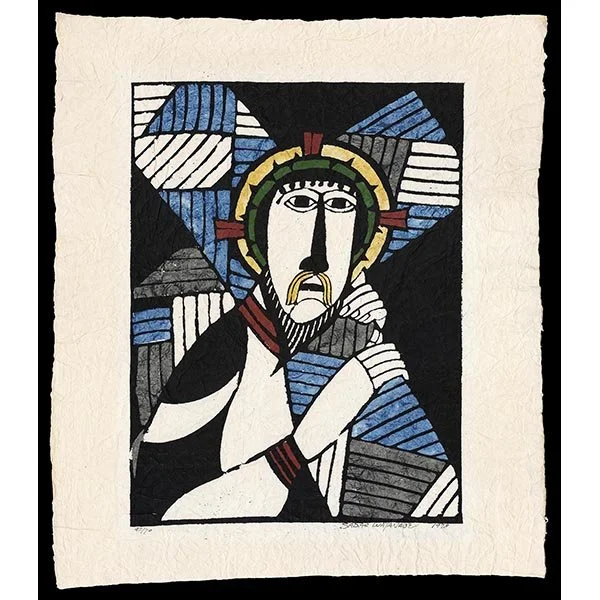WATANABE
COLLECTING JAPANESE PRINTS FEATURED CONTEMPORARY ARTISTSadao Watanabe
1913 - 1996
Born in Tokyo on July 7, 1913, Watanabe Sadao was a contemporary, mingei-style print artist specializing in Christian iconography. After losing both of his parents at the age of ten, Watanabe was invited by a neighbor to attend a church service and soon afterward converted to Christianity.
During his adolescence, he continued to attend services while working as an apprentice in fabric dyeing under textile artist Serizawa Keisuke. Watanabe was deeply influenced by two of Serizawa's stenciling techniques: katazome, a printing technique using crumpled, wet paper mixed suspended in soymilk, and kappazuri, a cloth dyeing technique adapted to produce prints. The choice of crumpled paper material thus gives his works a rather three-dimensional quality. Although his prints feature Christian subjects, his technique is entirely Japanese, and the figural style is similar to popular Buddhist prints of earlier periods. In addition to his mentor, Watanabe was influenced by Yanagi Soetsu, a founder of the mingei folk art movement. Watanabe's connection with mingei was further solidified in 1947 when he won first prize at the Japan Folk Art Museum and the Kokugokai prize the following year. His works were later exhibited at the Portland Art Museum in 1962 and the 1972 Winter Olympics Modern Print Show. Over the next several years, Watanabe taught printmaking in Oregon and Minnesota, visited the Lutheran Church in 1976, and held a private exhibition at the Grace Cathedral in San Francisco the following year.
He passed away on January 8, 1996, at the age of eighty-three. Many of Watanabe Sadao's works are now featured at the MoMA, Art Institute of Chicago, Honolulu Academy of Arts, and the Vatican Museum of Modern Religious Art.











